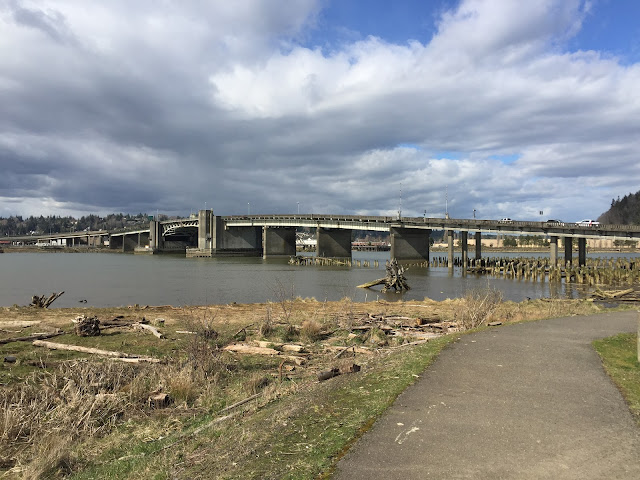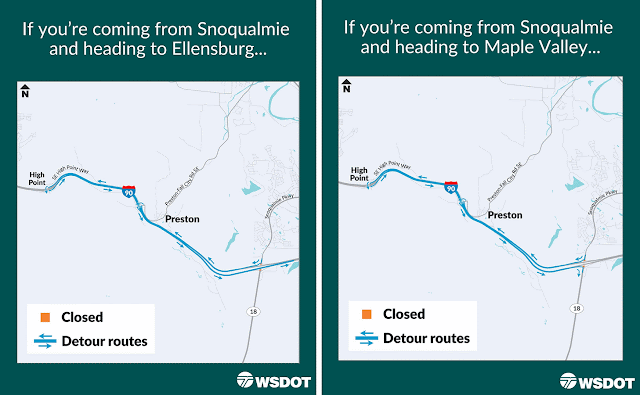By Christina Crea
When you think of a state airport, you might picture a quiet airstrip tucked into the forest or nestled between mountains. Or maybe a spot for hobby pilots or summer sightseeing. But in Washington, these modest runways are proving they can do much more.
Our state airports are stepping up as unsung heroes. From wildfires to high-stakes law enforcement, rural airports deliver during critical moments.
When wildfires rage, rural airports take flight
Every summer, wildfires sweep across Washington’s forests. These fires threaten homes, wildlife and entire communities. Huge planes and firefighting crews get the headlines. But it's often small, rural, out-of-the-way airports that quietly make those missions possible.
For example, Lake Wenatchee State Airport is closed now, but not for repairs or upgrades. Instead, it’s serving as a front-line hub for the Pomas Fire Response. (This fire is active in the Entiat area near Wenatchee.)
 |
| View of the Lake Wenatchee State Airport established as incident heli-base operations to fight the Pomas Fire in the Entiat area near Wenatchee. |
The fire started on June 13 after a lightning strike in the Glacier Peak Wilderness. It’s burning in steep, rugged terrain that’s hard to reach, making direct attack difficult. Because of this, the fire has been active for several weeks. It’s become one of the more persistent and challenging wildfires of this season. With rough terrain, changing weather, and dry fuels, the fire is a top priority for containment. Firefighting teams continue to face tough conditions, testing their resilience and coordination. In response, federal firefighting partners have set up a heli-base at Lake Wenatchee State Airport. The base is now hosting helicopters, equipment, and a large number of personnel.
Using this airport helps get resources quickly into remote, rugged areas of the fire zone. That helps slow the fire’s spread and protect nearby communities and natural resources. The airport also provides key support like refueling, maintenance, and a place for crews to gather. Its location close to the fire line means air crews can respond faster. This means ground crews get better support as they fight the fire from multiple directions.
The response to the Pomas Fire highlights how wildfires in Washington are becoming more intense and lasting longer. Local, state, and federal agencies are working together to contain the fire and reduce its impact.
The use of Lake Wenatchee State Airport shows how state-owned infrastructure plays a vital role in national wildfire efforts.
Air tankers, helicopters, and emergency teams can launch from remote strips. This can cut precious minutes off response times and help stop fires in their tracks.
 |
| Firefighting helicopter at Deer Park Municipal airport helping fight fires in surrounding areas. |
These state airports are more than just runways. They’re also staging areas for emergency supplies, equipment, and personnel. Being near remote fire zones makes them ideal for quick response. During wildfire season, some may be closed for weeks or even months to support firefighting efforts.
We maintain six airports specifically equipped for this kind of emergency work:
Together, they form a crucial backbone of the state’s wildfire defense strategy.
A quiet airstrip becomes a tactical command center
However, wildfire support isn’t the only way these airports shine.
In early June, a major law enforcement response turned Skykomish State Airport into a fully operational command post. The transformation was almost overnight.
The King County Sheriff’s Office turned the airfield into a launch pad for helicopters. It also served as a hub for SWAT and tactical units, and a base for mobile command centers. This was all in response to an ongoing investigation in the Cascade foothills.
 |
| Helicopter flying over Skykomish State Airport while it was an operational command post for major law enforcement response. |
“Skykomish gave us everything we needed in a remote setting—flat ground, forest access, and room to coordinate air and ground teams,” said one operations supervisor.
Their makeshift emergency base included:
- Three helicopters on 24/7 aerial patrol
- Mobile communications and tactical gear
- Search teams navigating rugged mountain terrain
- Supply stations and temporary shelter for crews in the field
Because it’s just off Highway 2 and near federal forest land, the airport became an ideal hub as the wildfire response grew.
Whether it’s fighting flames or coordinating crews, location and access are critical. These small airports are proving to be powerful tools when Washington faces challenges.
So next time you drive past a quiet rural airstrip, remember - what looks like an empty runway today…could be tomorrow’s emergency lifeline.
Want to learn how WSDOT Aviation supports Washington?
Visit https://wsdot.wa.gov/travel/aviation to see how these vital airports are keeping our communities safe - one airstrip at a time.































.png)